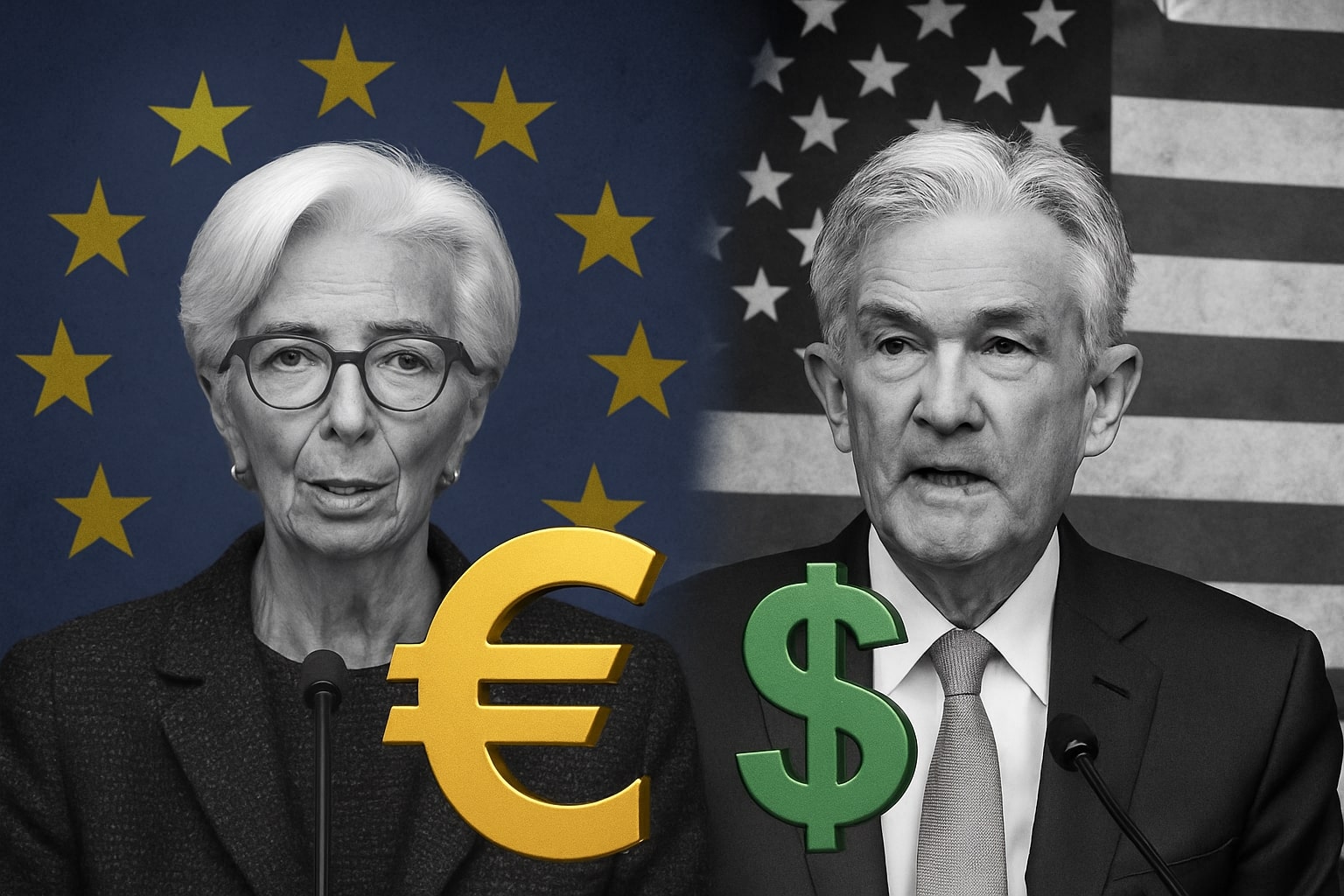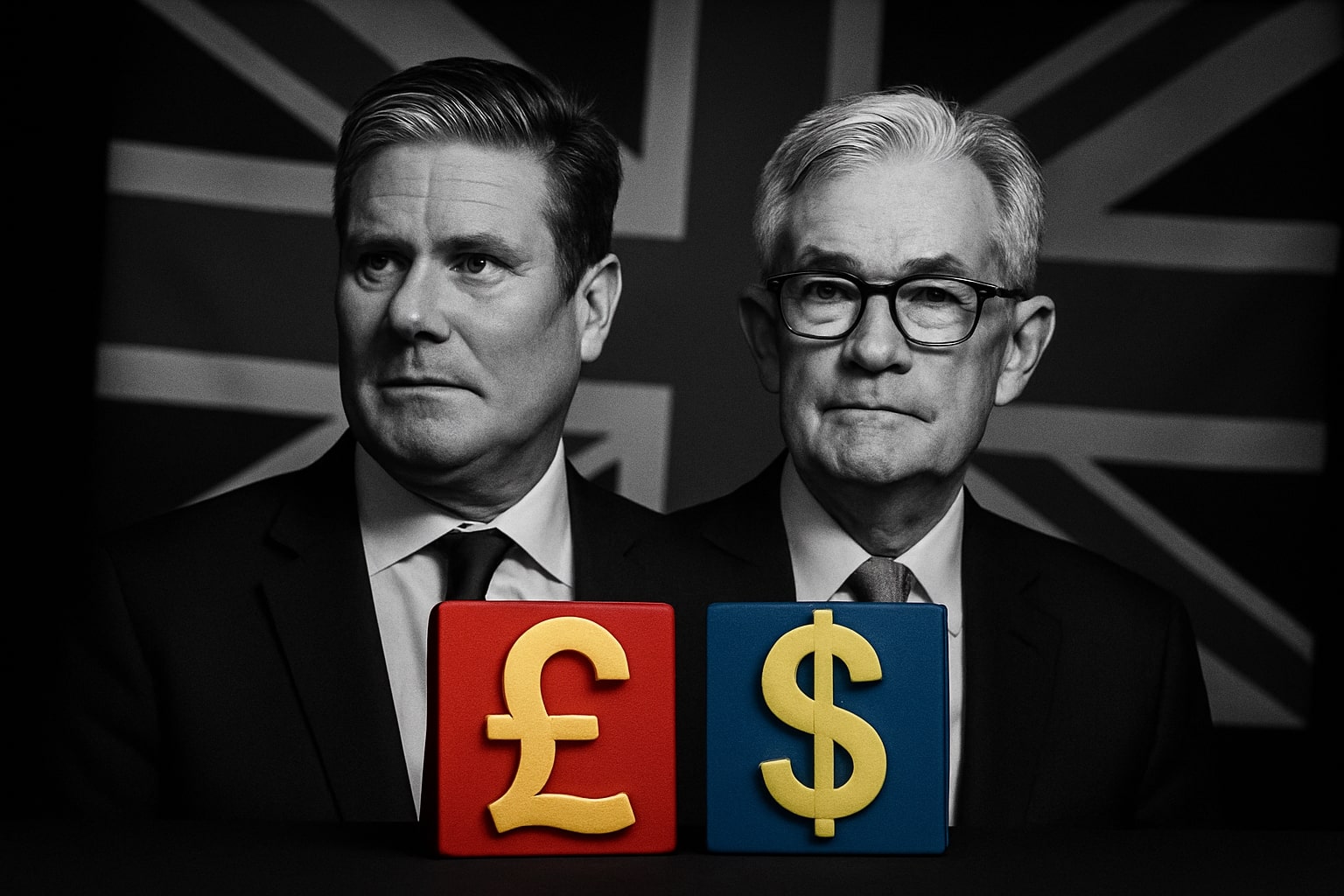
EUR/USD Price Forecast - Euro to Dollar Rebounds From 3-Month Low as Dollar Softens After 42K Jobs
Pair trades near 1.1530, up 0.36%, as U.S. yields drop to 4.09%, DXY slips below 100, and Eurozone retail data +0.2% lift sentiment; 1.1580–1.1620 seen as key breakout zone | That's TradingNEWS
EUR/USD (EURUSD=X) Climbs Toward 1.1550 as U.S. Dollar Weakens After Mixed Jobs Data, Fed Officials Signal Patience, and European Retail Data Boost Sentiment
The EUR/USD currency pair staged a steady rebound on Thursday, advancing 0.36% to 1.1529, after bouncing sharply from a three-month low at 1.1468 earlier in the week. The move followed a choppy midweek session dominated by mixed U.S. macro data, dovish undertones from Federal Reserve members, and improving sentiment across Eurozone equities and corporate earnings. The pair has now entered a critical technical zone between 1.1540–1.1580, where traders are assessing whether a breakout can shift the trend bias back to bullish for the first time since mid-September.
Macro Drivers: Mixed U.S. Data Undermines Dollar Strength, While Euro Sentiment Improves
The U.S. Dollar Index (DXY) eased to 99.99, marking a soft retreat from the 100.35 resistance, as investors digested conflicting economic signals. The ADP Non-Farm Employment Report showed a gain of 42,000 jobs in October, beating consensus estimates of 32,000 and rebounding from September’s -29,000 decline. Yet, the upside surprise failed to ignite sustained dollar strength because other indicators revealed fading momentum in services and consumer demand.
The ISM Services PMI printed at 52.4, only modestly above September’s 50.0, implying that the U.S. economy’s dominant sector continues to expand but at a slower and uneven pace. Meanwhile, traders brace for FOMC member Christopher Waller’s comments later Thursday and Friday’s University of Michigan Consumer Sentiment index, expected at 53.0, down from 53.6, to gauge whether Fed officials remain open to holding rates steady for longer.
Despite the resilience in U.S. employment, bond yields drifted lower—10-year Treasury yield near 4.09%, 2-year at 3.57%—tightening the dollar’s appeal versus the euro. This macro backdrop, combined with stronger Eurozone retail data (expected +0.2% MoM) and solid corporate results, allowed the euro to gain ground after weeks of capitulation selling.
Eurozone Fundamentals: Inflation Cools, Retail Improves, and Risk Appetite Returns
Across Europe, optimism gained traction after PMI data came in stronger than expected and retail consumption appeared to stabilize. Eurozone retail sales are forecast to grow 0.2% month-over-month, up from 0.1% in August, suggesting that household activity is holding firm despite the European Central Bank’s restrictive policy stance.
Improving equity market performance—particularly in German and French indices—also supported the euro, as investors shifted away from the U.S. dollar’s safe-haven trade. Corporate earnings from major European multinationals beat expectations this week, easing fears of a deepening slowdown. The Stoxx 600 index recovered 0.7%, its first back-to-back gain in over two weeks, while bond spreads between Italian BTPs and German Bunds narrowed to 1.32%, signaling risk-on sentiment.
Fed and ECB Divergence: Policy Caution on Both Sides
The Federal Reserve remains cautious but not explicitly dovish. Despite some speculation of a December rate cut (market-implied probability 62%), officials appear split, emphasizing that strong employment and sticky service inflation justify holding current rates a bit longer. Fed futures suggest no more hikes, but no rapid easing either.
Meanwhile, the European Central Bank (ECB) maintains a neutral tone, acknowledging disinflation while keeping policy restrictive. Core inflation eased to 3.4% YoY, its lowest since early 2022, giving policymakers breathing room to extend their pause. ECB Governing Council member Joachim Nagel said Thursday that “policy is working, but cuts remain premature,” reinforcing that the next moves will depend on growth data rather than inflation targets.
Technical Picture: EUR/USD Eyes Breakout From Descending Channel
The EUR/USD pair remains trapped in a descending price channel but shows early signs of reversal. The pair has tested the 20-day EMA at 1.1543 and now eyes the 50-EMA near 1.1597, a level that coincides with descending trendline resistance from August highs. A break and sustained close above 1.1580–1.1620 could shift the technical structure toward bullish territory, targeting 1.1665 initially and potentially 1.1720 if momentum accelerates.
Immediate support sits at 1.1470, the weekly low and key pivot zone. Below this, 1.1440 and 1.1409 serve as critical downside markers; losing these levels would reassert the dominant bearish trend with scope toward 1.1340, last tested in June.
Momentum indicators offer cautious optimism. The RSI rebounded to 53 from 36, signaling easing selling pressure. The MACD histogram flipped positive on the 4-hour chart, while the ADX (Average Directional Index) reading at 18 implies fading bearish control. Volume analysis confirms renewed buying interest from 1.1480–1.1520, where institutional orders likely accumulated.
Market Behavior: Positioning Shifts and Sentiment Balance
CFTC data shows speculative positioning on the euro trimmed net shorts by 9,400 contracts, suggesting traders are paring back dollar-long exposure. The EUR/USD 1-month implied volatility fell to 6.1%, near a five-month low, consistent with a market awaiting confirmation before committing to a directional breakout.
Options pricing also reflects this indecision: the 25-delta risk reversal moved slightly in favor of euro calls, from -0.40 to -0.12, its most balanced reading since August. Traders appear to be hedging against upside risk rather than betting on continued weakness.
Retail trader sentiment remains mixed, with 52% of traders net long on EUR/USD, while institutional models show neutral to mildly bullish bias through mid-November.
Read More
-
Super Micro Computer Stock Price Forecast - SMCI Falls After Earnings Miss but Raises Full-Year AI Revenue Outlook
06.11.2025 · TradingNEWS ArchiveStocks
-
XRP Price Forecast - XRP-USD Holds Near $2.30 as Ripple’s $500M Raise and Mastercard Deal Redefine Its Market Path
06.11.2025 · TradingNEWS ArchiveCrypto
-
Oil Price Forecast - WTI and Brent Crude Retreat Below Key Levels as Saudi OSP Cuts
06.11.2025 · TradingNEWS ArchiveCommodities
-
Stock Market Today - AI Stocks NVDA,AMD,QCOM Crash, Layoffs Spike, and Tesla’s $1 Trillion Vote Rattles Markets
06.11.2025 · TradingNEWS ArchiveMarkets
-
GBP/USD Price Forecast - Pound Holds Near 1.3060 Ahead of BoE Decision
06.11.2025 · TradingNEWS ArchiveForex
Comparative Currency Dynamics: USD Weakens, GBP Lags, JPY Stalls
While EUR/USD rebounds, other major pairs tell a similar story of dollar fatigue. GBP/USD trades near 1.3093, up 0.4%, after the Bank of England’s narrow 5–4 vote to hold rates at 4.0%. The USD/JPY hovers around 153.60, reflecting a fragile yen amid diverging U.S.–Japan policy paths.
These cross-currency flows reinforce a theme of limited dollar upside and growing momentum for European currencies, particularly as U.S. yields plateau and macro divergences narrow.
Institutional Outlook and Strategy: Range-Bound but Building Reversal Potential
Most bank research desks remain cautious in the near term but acknowledge that EUR/USD’s downside is losing momentum. ING targets 1.16 by late November, citing weaker U.S. consumer data and easing yields. BNP Paribas projects 1.17 by year-end, assuming the Fed pauses and Eurozone data surprises positively. Citigroup, however, retains a more conservative view, expecting consolidation between 1.1450–1.1600 until clearer inflation direction emerges.
From a trading perspective, key levels for intraday positioning are support at 1.1498 and resistance at 1.1547–1.1580. A break above 1.1580 could trigger short covering toward 1.1625, while failure to defend 1.1470 risks a slide toward 1.1400.
TradingNews Analysis Verdict: Hold Bias with Tactical Long Setup
Based on the current structure, the EUR/USD (EURUSD=X) pair shows signs of early recovery after months of weakness but remains within a corrective phase. The mix of softer U.S. data, eurozone stabilization, and technical convergence suggests a neutral-to-bullish bias for the short term.
For traders:
-
Entry Zone: 1.1490–1.1520
-
Target 1: 1.1580
-
Target 2: 1.1660
-
Stop-Loss: below 1.1440
-
Bias: BUY (short-term), HOLD (medium-term) until a confirmed close above 1.1620 validates a structural trend reversal.
The euro has weathered a prolonged bearish cycle, but as dollar strength wanes and macro fundamentals normalize, the pair’s next decisive move is forming—one likely to define the trajectory for the remainder of Q4 2025.


















